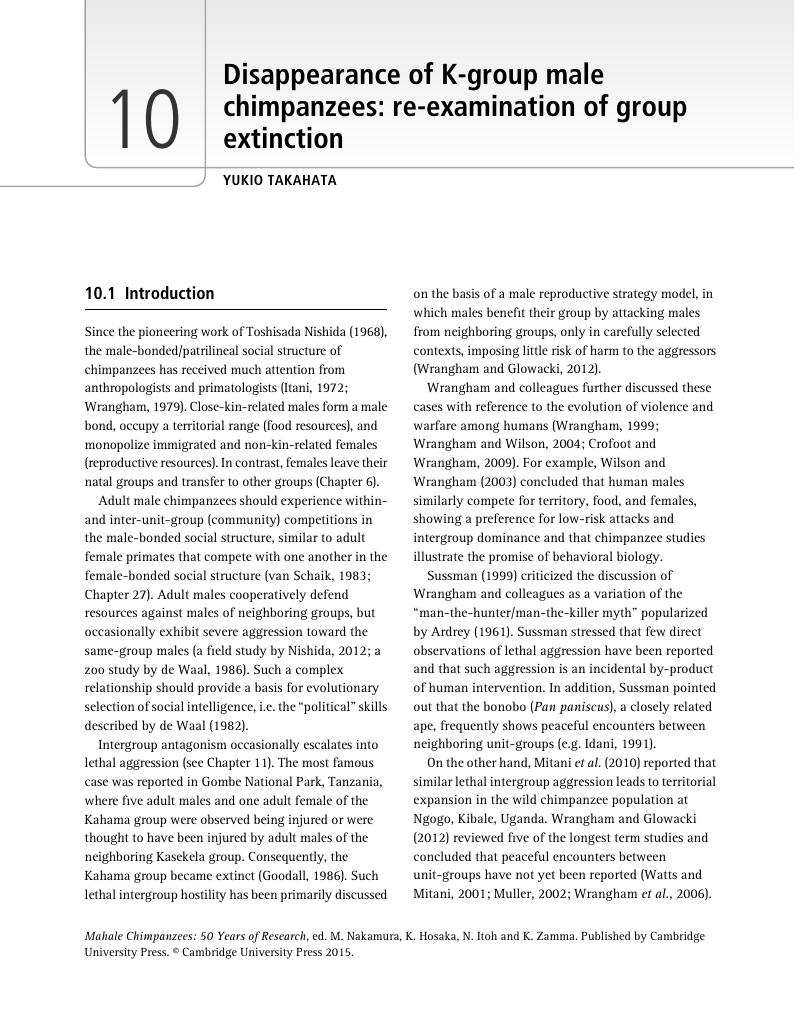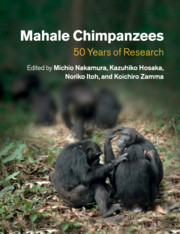Book contents
- Mahale Chimpanzees50 Years of Research
- Mahale Chimpanzees
- Copyright page
- Contents
- Contributors
- Foreword
- Preface
- Acknowledgments
- 1 Introduction
- Part I History and overview
- Part II Social organization
- 6 Social system: features and variations
- 7 Demography of the M group
- 8 Home range
- 9 Fission–fusion grouping
- 10 Disappearance of K-group male chimpanzees: re-examination of group extinction
- 11 Intergroup relationships
- Part III Ecology
- Part IV Feeding
- Part V Life history and health
- Part VI Social relations
- Part VII Social behavior
- Part VIII Behavioral diversity
- Part IX From field to lab
- Part X People and chimpanzees
- Appendices
- Index of chimpanzees’ names
- Subject index
- References
10 - Disappearance of K-group male chimpanzees: re-examination of group extinction
from Part II - Social organization
Published online by Cambridge University Press: 05 September 2015
- Mahale Chimpanzees50 Years of Research
- Mahale Chimpanzees
- Copyright page
- Contents
- Contributors
- Foreword
- Preface
- Acknowledgments
- 1 Introduction
- Part I History and overview
- Part II Social organization
- 6 Social system: features and variations
- 7 Demography of the M group
- 8 Home range
- 9 Fission–fusion grouping
- 10 Disappearance of K-group male chimpanzees: re-examination of group extinction
- 11 Intergroup relationships
- Part III Ecology
- Part IV Feeding
- Part V Life history and health
- Part VI Social relations
- Part VII Social behavior
- Part VIII Behavioral diversity
- Part IX From field to lab
- Part X People and chimpanzees
- Appendices
- Index of chimpanzees’ names
- Subject index
- References
Summary

- Type
- Chapter
- Information
- Mahale Chimpanzees50 Years of Research, pp. 119 - 127Publisher: Cambridge University PressPrint publication year: 2015



